Introducing the latest myCWT product and service enhancements
Building on our digital, omnichannel myCWT platform, our new products and services will simplify travel management for you and your employees – anytime, anywhere, anyhow.
Note: Featured services may not be available in your country at this time. Please reach out to your CWT representative for more details.
Hear from Chief Product Officer, Erica Antony as she shares the key product highlights of 2024, along with the key areas driving innovation.
-

2040: Baseline, Boom or Bust
As we enter an era of rapid transformation and unprecedented challenges, it is essential for travel managers, meeting & event planners, and corporate decision-makers to look ahead and frame our current strategic thinking with a clear vision of the future. Business travel and meetings and events (M&E) are poised for significant change over the next decade and a half, driven by a complex interplay of sustainability goals, technological advancements, evolving work models, and geopolitical dynamics.
In this paper to mark the 10th anniversary of our Global Business Travel Forecast, we explore, for the first time, a long-term vision of the future and potential trajectories through three distinct scenarios, each offering insights into how these forces should affect policy-making, budgeting and priorities. By examining these scenarios, we can better understand the diverse possibilities that lie ahead and the strategic imperatives required to thrive in each potential future.
Based on trajectory data analysis and interviews with industry leaders, behaviorists and climate tech founders, this forward-looking approach enables us to anticipate changes, strengthen our strategies, and make informed decisions that align long-term objectives. It is through this lens of foresight and adaptability that we can build resilience, seize opportunities, and navigate the complexities of the future.
We invite you to reflect on the insights presented, and consider how your organization can prepare for the opportunities and challenges that lie ahead. Together we can ensure that travel and meetings remain catalysts for growth, scalability and sustainable practices.
- Scenario development is both an art and a science
- Megatrends Shaping the Future of Business Travel, Meetings and Events
- Sustainability goals the new crux of corporate policy
- Technology Revolutionizes Travel Management
- Modern work models spark new travel patterns
- Changing demographics open doors to new opportunities
- Three Scenarios: Base case, boom and bust
- Future-proofing strategies

-

CWT GBTA Global business travel forecast 2025
When it comes to pricing, global business travel has finally reached an enduring, higher baseline. Prices will continue to rise in 2025, but only moderately, so expect a period of normalized growth.
However, this pricing environment, one of marginal gains and price regularity, is fragile. Global leisure travel has now realized a lot of its pent-up demand, while corporate travel has been resurgent, with 2024 edging at preCovid levels.
There are many factors at play, whether its volatile oil prices, labor costs and constraints, inflationary pressures, and geopolitical factors. As this elevated baseline edges upwards, albeit marginally, travel budgets will come under increased scrutiny, especially as travel patterns and attitudes change.
It’s why business travel can’t be viewed in a silo, and the true value to an organization must be fully realized. This forecast can help with those calculations.

-

Capitalize on emerging technologies in corporate travel
Technological advancements are accelerating at an unprecedented pace. How will emerging innovations like Generative AI, blockchain, and self-sovereign identity (SSI) transform corporate travel?
BTN and CWT probed global CEOs, travel managers, industry consultants and tech experts on the promises, questions, and expectations these innovations raise and how they are set to reshape traveler experience, cost control and service delivery in corporate travel and events.
Download and discover
- The technologies that will have the greatest impact on corporate travel in the next 2-5 years
- How these emerging technologies are poised to control costs, enhance service and security, and boost efficiency
- The critical challenges, opportunities, risks and roadblocks each innovation raises
- What travel managers, buyers and experts anticipate from these innovations

-
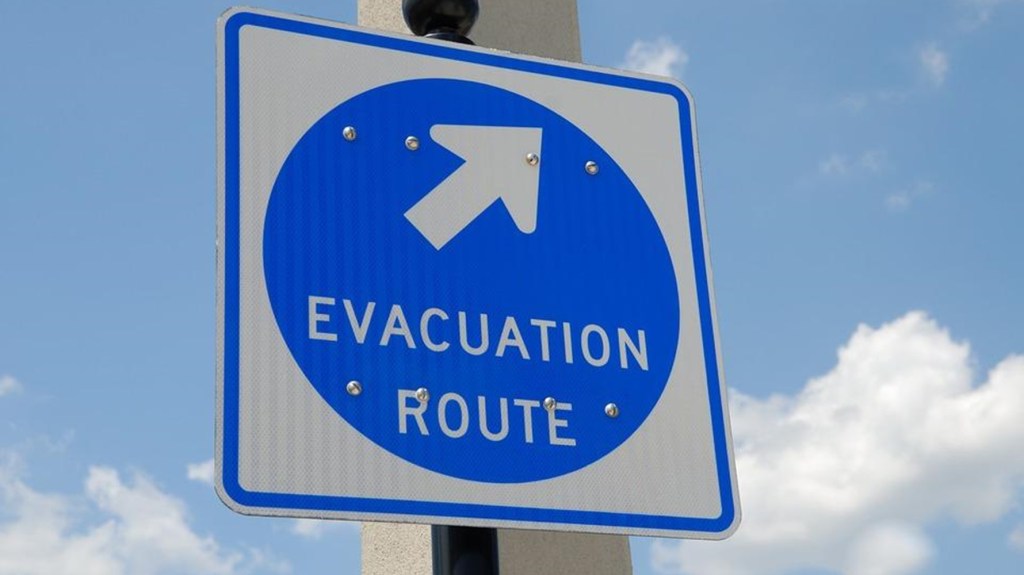
When a hurricane hits – From disaster mode to caring mode
Carol “Korky” Gartside was waist-deep in water, frantically looking for a high and secure place to store her laptop. The driving rain, gusty winds and flooded streets wrought by Hurricane Harvey last August, did not make it safe to bring anything but the clothes on her back, a converted garbage bag as raincoat, and overnight clothes. She settled on a high shelf and quickly evacuated her home.
Gartside, a senior international travel consultant for CWT, would spend the next four months living and working from a travel trailer next to her home, while it was undergoing the slow process of reconstruction.
This year, the National Oceanic and Atmospheric Administration (NOAA) predicts as many as four category 3 or higher hurricanes. Harvey was a category 4. For CWT’s Energy, Resources & Marine (ERM) team in Houston, it is, in Gartside’s words, “business as usual” even though life was turned “upside down”. During Harvey, 95% of CWT’s agent workforce were up and running, working round the clock on more than 121,000 cancelled and delayed flights, and putting in an additional 4,000 hours across the network—before, during and after the storm.
As soon as a hurricane is forecast to make landfall in Houston, a volunteer emergency response team (A Team) is assembled, ready to be deployed at a moment’s notice further north of the state, to San Antonio or Dallas, with families in tow. It has a backup team (B Team) similarly ready to be activated, ensuring that there are groups of people who are 100% fully functioning. They are supported by an H Team, or home team, whose agents are based out of state, and ERM 24 that’s staffed 24 hours between two continents.
“Proactive work makes a difference,” said Va’Nia Bryson, Operations Manager, CWT ERM, who helped assemble the teams.
CWT issues an alert, runs reports of who is in Houston, and works to get a large proportion of travelers out before the storm hits, including on offshore rigs where entire crews need to be evacuated. CWT also sends updates to travel managers about the status of airports, so they, in turn, can communicate with their people.
The result is minimal impact to clients.
“Clients trust us to take care of their people,” Bryson said. “They were taking our direction, and it worked out pretty well.”
Category 4 storm, notwithstanding.
-
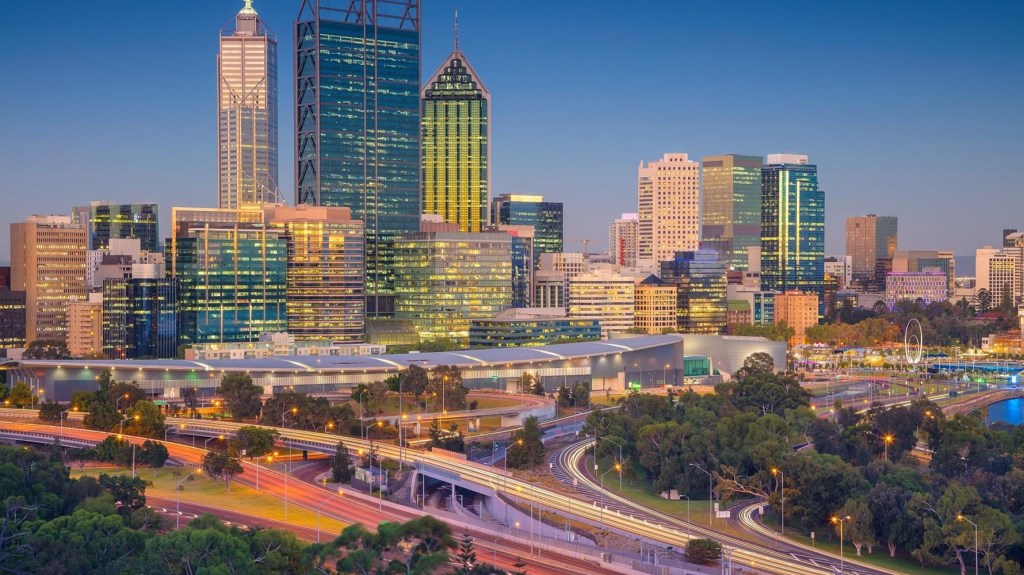
Perth international airfares continue to rise, while hotel occupancy and rates fall: CWT/CAPA report
CWT Solutions Group, the consulting division of Carlson Wagonlit Travel, and CAPA – Centre for Aviation have found that airfares on key international business routes from Perth are continuing to increase, despite highly publicized new routes including Qantas’ non-stop Perth-London service. Fares between Perth and destinations such as Singapore and Houston were up more than 5% year-on-year in the first quarter of 2018.
These findings are published in the latest Business Travel Pulse report, which focuses on the Australian city of Perth. The report brings together key aviation and hotel data from both organizations to deliver informed opinions and in-depth analysis.
Perth Airport’s capacity growth seems to be dramatically slowing down in 2018, and could turn out to be the lowest year for seat increases since 2013. As a result, airfares are expected to rise further this year. This correlates with passenger traffic trends that have been decreasing from 2015 to 2017. Passenger traffic saw a slight decrease in 2017 and capacity saw an increase, which suggests travelers could benefit from competitive average ticket prices (ATPs). 2018 passenger evolution seems moderate, however, ATPs may increase if capacity remains as low as forecasted.
“Several factors are conspiring to push prices up in the Perth market,” said Peter Harbison, Executive Chairman, CAPA – Centre for Aviation. “It’s clear that the impact of higher fuel input costs this year is steadily exerting upwards pressure on fares, although the dynamic link with capacity complicates that judgment. Capacity is trending down, which, assuming reasonable demand as the local economy recovers, would also generally have a tendency to encourage prices up.”
“With two thirds of Perth’s system seats being domestic, it’s relevant that competitive tensions have reduced domestically over the past couple of years – the only exceptions being in the Sydney and Melbourne economy segments,” added Harbison.
Domestically, it is a slightly different story with airfare results mixed across the board. Interestingly, economy class airfares to the east coast’s two major centers, Sydney and Melbourne, have actually decreased by between 1-5%.
“Consolidation is key to securing better corporate fares in the current environment, where higher oil prices and capacity cuts are expected to keep pushing airfares up,” said Richard Johnson, Director, Asia Pacific, CWT Solutions Group. “We sometimes see companies having multiple contracts with the same airline. For example, they may have separate contracts in different countries. Consolidating their total domestic and international air spend into a single contract puts them in a stronger negotiating position with the airline.”
The report also reveals that the hotel occupancy rate in Perth continues to decline, achieving only 76.5% year-to-date, a decrease of 2.1% over 2017. Correlating with the decline in occupancy, the average daily rate (ADR) has also decreased $10 from A$216 in 2017 to A$196 in 2018. While this is great news for travelers in the short term, in the mid-to-long term it could lead to hotel closures and impact tourism.
“It continues to be a buyer’s market in Perth,” said Johnson. “There has been a substantial increase in room capacity over the past few years, with many new hotels still in the pipeline. Meanwhile, corporate travel demand hasn’t fully recovered following the downturn in the oil, gas and mining sectors. That said, the demand picture looks set to change, with commodity prices on the rise and the related industries poised for recovery. The positioning of Perth as a western hub with the introduction of routes like Qantas’ non-stop service to London is also expected to boost demand.”
“In a market like this where hotels are saddled with excess inventory, companies might be able to secure significantly discounted corporate rates by committing larger volumes with one or two hotels, rather than spreading their stays across multiple properties. At the same time, corporate buyers may also be able to secure Last Room Availability (LRA) rates at little or no premium over the regular rates,” added Johnson.
Last Room Availability (LRA) rates, which are typically higher than regular corporate rates, gives a company the right to buy a room at their contracted terms and prices even if the hotel only has one room left in that category.
Carlson Wagonlit Travel
Companies and governments rely on us to keep their people connected. We provide their travelers with a consumer-grade travel experience, combining innovative technology with our vast experience. Every day, we look after enough travelers to fill more than 260 Boeing 787s and 100,000 hotel rooms – and handle 105 events. We operate in around 150 countries, and in 2017 posted a total transaction volume of more than US$ 23 billion.
-
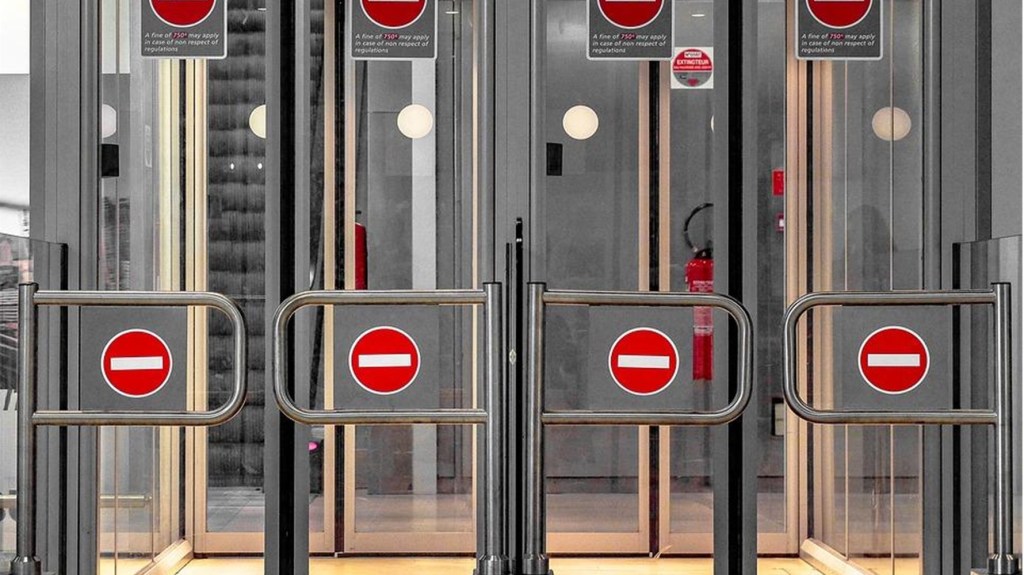
Check(point) list – The pro’s guide to airport security
Going through airport security can be unnerving, especially if the line is huge and you’re running late. We’ve all been there, but be careful how you handle stress during the security process. Losing your temper can have serious consequences.
The US Transportation Security Administration (TSA) created a secret file to track threatening and unruly travelers. Known as the ’95 list’, the record created in February this year has only 50 people on it, so the title’s a tad misleading.
Regardless, you should obviously endeavor to stay off this blacklist. Here are five tips to smooth out your journey through an airport’s myriad checkpoints – without losing your smile:
- Arrive early
Nobody likes to spend time waiting, but it’s worth it to go through security without rushing. Lines can be longer than expected and the stress can lead you to get frazzled or worse, make you look suspicious. - Follow the rules
You will have to take out some items for scanning so have your laptop and tech tablets easily accessible, The same goes for liquids (obviously in max 100ml containers). Have them pre-placed in one transparent re-sealable plastic bag. - Have your traveling documents to hand
Hold your boarding card and ID in your hand before getting in the security line. They can move fast and you don’t want to delay others by digging around in your hand luggage. - Dress for success
Leave your B.A Baracus costume at home. Jewelry, coins, belts, shoes with complicated lacing, scarves, and several layers of clothing will only hold you up. Keep it simple and save time. - Be nice
Be polite and respectful with the security guards and do as you are told. If you’re selected for additional screening, comply immediately and let staff know if you have any metal surgical implants that can’t removed. Oh, and probably best not to wear armour – luckily I was ahead of a guy wearing it in Switzerland recently.
- Arrive early
-
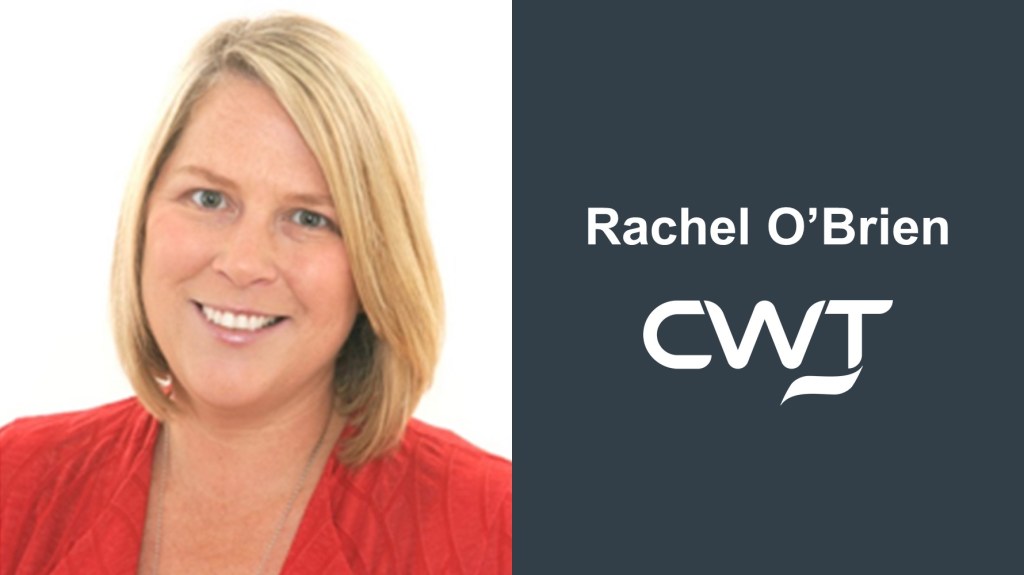
Carlson Wagonlit Travel appoints Rachel O’Brien as VP and Chief Technology Transformation Officer
Carlson Wagonlit Travel, the global travel management company, has appointed Rachel O’Brien as its new VP and Chief Technology Transformation Officer, effective immediately.
“Rachel is known for transforming organizations in a pragmatic way to drive business success,” said Andrew Jordan, CWT’S EVP and Chief Technology Officer. “She will be instrumental in our digital transformation by supporting our processes and providing the skill sets to deliver on our promises.”
At CWT, Rachel O’Brien will run governing, reporting, measuring and budgeting across the Product & Technology organization, reporting to Andrew Jordan.
Rachel has held digital transformation roles with Santander UK, Pearson Technology, Penguin Group and NSC Technology. She joins most recently from Ladbrokes Coral, where she was responsible for the successful delivery of technology, and implementation of change and culture in their technology transformation.
She has a BA in Education, a Post-Graduate in Secondary School Teaching and is a Prince2 Project Management Practitioner.
Carlson Wagonlit Travel
Companies and governments rely on us to keep their people connected. We provide their travelers with a consumer-grade travel experience, combining innovative technology with our vast experience. Every day, we look after enough travelers to fill more than 260 Boeing 787s and 100,000 hotel rooms – and handle 105 events. We operate in around 150 countries, and in 2017 posted a total transaction volume of more than US$ 23 billion.
-

Steps to improve travel policy compliance
Corporate travel is a significant part of your company’s budget – so making sure your travel policy is compliant can be key to your bottom-line results.
From helping employees understand your policy to enforcing specific guidelines and procedures for them to follow, policy compliance is key to achieving your corporate travel aims and objectives.
What makes business travelers compliant?
Giving employees more freedom and greater responsibility over how they manage their own corporate travel could actually help reduce overall spend rather than increase it.
However, while every business has its own way of managing its employees, there’s no one-size-fits-all way of making sure they stick to your corporate travel policy. So let’s look at the common reasons why some employees might not comply with your corporate travel policy.
- It’s been poorly communicated
If your employees aren’t aware of your corporate travel policy, you can’t expect them to comply with it. The first step towards enforcing your corporate travel policy is making sure it’s widely circulated.
Whether you choose to deliver it in a printed document, over the intranet or in an email, the relevant channels will differ between organizations – and it’s important you know which of these is the most effective within your company if you want the policy to reach your employees. - Employees don’t understand it
Is your corporate travel policy easy to understand? If you invite employees to give feedback, you can help them grasp the guidelines and procedures they need to know about, and answer any questions they might have. This will help them to better understand how to comply with the policy.
You’ll also be able to use their suggestions to make sure your corporate travel policy is consistently evolving and improving alongside the needs of both your business and your employees. - Employees are breaching it accidentally
For the most part, business travelers want to do what’s right for their company, but occasionally employees might breach policy without realizing it. Often this is because they’re not clear whether certain rules are mandatory.
Improve travel policy compliance in your organization by making employees aware of guidelines and procedures. To do this you must first have a corporate travel policy that covers everything from airline bookings, to hotel reservations and ground transportation.
There also needs to be clear guidance on issues such as approval procedures, additional areas of expenditure, and gifts and favors, so they’re clear on what is expected of them at every point of their business trip.
Need help with writing a corporate travel policy? Take a look at this helpful guide. - Employees are knowingly breaching it
According to a study by the London School of Economics, there are some areas of policy that business travelers tend to ignore more than others. Getting the right approval before making a booking, and abiding by restrictions for airfares and hotels, are the most common rules employees tend to ignore.
You can improve travel compliance around these areas by using software such as your online booking tool, which only displays airfare and accommodation results that fall within policy guidelines, giving the traveler no choice but to work with the policy.
5 ways to improve your travel policy complianceYour methods of improving corporate travel compliance must be adapted to your business culture, and be flexible around your employees, industry and economy. However, there are a number of general strategies for boosting policy compliance that make a good starting point for enforcing your corporate travel guidelines and procedures.
Educate your travelers
It’s good practice to involve employees in any initiative that affects them – and this is particularly important when writing a corporate travel policy. While the entire policy document itself might be delivered in an email, over the intranet or as a print-out, taking extra time to guide employees around the processes most relevant to them can ensure policy compliance in those areas.
One way of doing this would be to set up workshops about the correct way to book hotels, change airlines and gain approval. Better still, if corporate travel training was a key part of your company’s induction process your new hires would be well-versed in your policy guidelines from day one, naturally improving travel compliance over time.
Use a corporate travel agency
Hiring a corporate travel management specialist can really boost policy compliance. Teaming up with a company such as CWT will give you access to innovative software, providing a powerful overview of what’s being spent where, when and by whom. It means you’ll know instantly if a traveler has booked outside of policy.
Being at the forefront of corporate travel compliance trends and best practice means our industry expertise will keep you ahead of the curve – and head of your competitors – when it comes to outlining and enforcing an effective travel policy.
Communicate policy guidelines
The success of your corporate travel policy rests on how effectively it’s communicated. This doesn’t just mean sending an email to all your business travelers with the policy document attached – it means actively engaging with them to make sure they understand it.
Clarify the preferred booking channels, types of expenses they can claim, and key points of contact – taking care to explain why those decisions have been made. To improve policy compliance, communicating with your employees about travel policy needs to be an ongoing process.
You can do this by using apps like CWT Program Messenger to get in touch with business travelers while they’re on the road, when you need to remind them of policy or make them aware of any changes.
Use travel booking tools
With an abundance of cutting-edge technology on the market, your company has a range of innovative software it can harness to improve corporate travel policy compliance. Some tools allow travel managers to make sure employees stay within the policy’s parameters.
For example, the CWT AnalytIQs software lets you see in real-time when travelers are booking outside of policy and get in touch through targeted messages to help them make better decisions. This technology empowers you to see when there’s been a policy breach, and react instantly, so you can keep on top of your corporate travel spending.
Restrict expense reimbursement
Clear and concise rules on expenses are essential for any good corporate travel policy. Any confusion over whether, for example, room service charges are included in the list of permitted expenses, could result in your company – or the traveler – facing a significant outlay in unnecessary costs.
To avoid this, all aspects of accommodation, meals, tips, entertainment and additional travel should be factored into a robust reimbursement procedure. Refusing to reimburse travelers for erroneous claims is a simple but effective way of discouraging them from breaching policy, therefore improving travel compliance in this area.
Measuring your compliance
To improve travel policy compliance, you need to be able to measure performance by setting goals and metrics for:
- Making time efficiencies
Make a note of how much time you and your travelers are spending on planning and making business trips, and compare it over a period of weeks and months. You might find you can help your employees become more productive on the road by using apps such as myCWT.
This app syncs employees’ travel schedules with their business smartphone calendars, giving them crucial travel information when they need it – so they have more time to work. - Optimizing travel budgets
For an accurate real-time overview of your corporate travel spending, CWT AnalytIQs gives you a detailed analysis of specific areas of expenditure. This allows you to measure your spending against your budget targets, draw conclusions and make financial decisions across a broad range of areas. - Reducing travel expenses
CWT AnalytIQs software also gives you real-time insights into how your corporate travel budget is being spent to help you identify key opportunities for savings – and allow you to keep on top of your reimbursement guidelines and procedures. - Improving employee satisfaction
By regularly surveying travelers to see if their needs are being met, your company can make necessary changes to guidelines and procedures, improve employee engagement and ultimately boost policy compliance.
A corporate travel policy will help you reduce your business’s travel spend, meet your objectives and improve employee security. But you won’t see any of these benefits if your business travelers don’t comply with it.
Just look at the facts: businesses with travel compliance rates of more than 80% spend less on expenses per business traveler, according to the Chartered Institute of Procurement and Supply. To achieve this, you must be flexible to the needs of your employees, business and industry.
As the industry leaders in corporate travel management, CWT will help you drive improvements in your travel policy compliance – keeping your employees happy and your travel spend down.
- It’s been poorly communicated
-
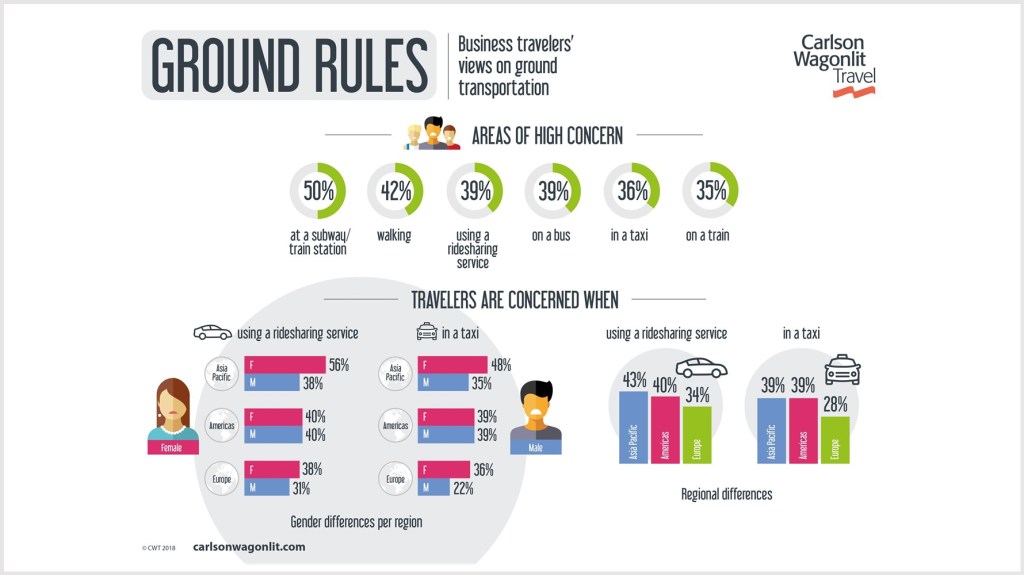
Carlson Wagonlit Travel research: business travelers feel 50% safer at airports than at train or subway stations
Global business travelers feel more nervous at train or subway stations than at airports, according to research commissioned by Carlson Wagonlit Travel (CWT), the global travel management company.
Travelers are most worried about subways and train stations (50%), walking (42%), ridesharing services (39%), buses (39%), taxis (36%), and trains (35%). These are six of the ten top areas of concern – ahead of airports (34%), airplanes (31%), eating out (30%) or hotels (27%).
“Travel managers should focus their safety and security programs on what travelers worry about,” said Christophe Renard, Vice President of CWT Solutions Group, the consultancy arm of Carlson Wagonlit Travel. “Small things like providing clear instructions on getting out of the airport, trustworthy suppliers, basic tips on how to address dangerous situations – these can all make a big difference.”
Ridesharing services versus taxis
As ridesharing services like Uber become more common, displacing traditional taxis, travelers now make little distinction between the two. Travelers still feel marginally safer in taxis, though. Travelers from Asia Pacific are the most concerned overall: 43% feel nervous using ridesharing services and 39% when taking a taxi. In the Americas, the numbers are 40% and 39% respectively, and in Europe 34% and 28%.
Female business travelers in Europe and Asia Pacific are more likely to feel nervous about personal safety in ridesharing services or taxis than men.
Looking at ridesharing, 56% of Asia Pacific women feel very/somewhat nervous versus 38% of men. For taxis, that is 48% and 35% respectively. In Europe, the differences are less pronounced. For ridesharing, the numbers are 38% for females versus 31% for males. For taxis, it is 36% versus 22%. In the Americas, there is no statistical difference between genders.
Even though ridesharing is associated with the younger generation, the findings show that these travelers are more concerned about personal safety. Millennials, in all regions, are the most worried, followed by gen X travelers and baby boomers.
In Asia Pacific, half of the millennial travelers are very/somewhat concerned when using a ridesharing service, followed by 44% of gen X and 35% of boomers. In the Americas, the percentages are 47% for millennials, 42% for gen X and 29% for boomers. In Europe, the numbers drop to 44%, 34% and 21%, respectively.
These differences might be down to gender. According to the research, gender differences appear to track the differences seen between generations. This may be because males are more likely to travel for business the older they get, but the opposite is true of female business travelers. The younger women are, the more likely they are to travel for business.
Carlson Wagonlit Travel
Companies and governments rely on us to keep their people connected. We provide their travelers with a consumer-grade travel experience, combining innovative technology with our vast experience. Every day, we look after enough travelers to fill more than 260 Boeing 787s and 100,000 hotel rooms – and handle 105 events. We operate in around 150 countries, and in 2017 posted a total transaction volume of more than US$ 23 billion.
-

Prep notes – Foolproof tactics to plan your event
A study by the journal of experimental social psychology found that meeting face-to-face is 34 times more effective than email. But we don’t need a study to know the lasting impact of an awesome event.
However, setting one up takes precision planning. From choosing a venue to selecting the right keynote speaker, the stakes are high. In these high-pressure situations, it’s easy to forget the vital components that make an event run smoothly from start to finish.
CWT Meetings and Events organises 38,500 projects for customers every year, across all industry sectors, globally. From not leaving time to set up properly or choosing the wrong size venue, the same mistakes arise time and again. Here’s how to tackle them head-on, and pull off a successful gathering.
- Keep up with expectations
Always start by knowing what your attendees want. Steer clear of technical jargon or off-topic speeches and keep people in-the-know at every juncture. No meeting’s too small for a detailed itinerary and several means of communication. - Leave time to set-up
Technical problems are an event planner’s worst nightmare. Allow ample time to set up, even if it means hiring the venue 24-hours before the big day. That way, you can be sure you’re not left rushing through a sound and light-check an hour before you’re due to start. The last thing you want is a screeching microphone or faulty projection. - Match the number of attendees to the venue
Standing in the back of a crammed room, or dotted around a cavernous auditorium several rows from the next person, are equally detrimental. You want to strike the perfect ratio of people to space.
How? Set the RSVP date well in advance to receive a complete list of attendees, so you can find a suitable venue. There’s a Swedish word, ‘lagom’ which means ‘just the right amount.’ That’s what you’re after. - Is it a good time to host?
Choosing the right date is crucial. Eliminate dates with high competition from a similar event. Avoid bank holidays and public holidays and choose dates that are favourable for PR and marketing, like international awareness days. - Keep a hawk’s eye on suppliers
There’s no harm in coming across like a stalker and triple-checking with suppliers and vendors. That way you can prevent hidden charges or a sudden lack of availability. Have checkpoints in your schedule to make sure vendors deliver on time, at the correct quantities and with no hidden fees. With so much going on and so many different suppliers, double-checking is imperative. - Have a back-up plan
If you’re hosting your event outside, choose a venue with indoor space in case it buckets down with rain. But rain’s not the only thing that could go wrong. Have a service continuity plan to work against obstacles like transport strikes. - Brief your speakers
Event planners often reach out to guest speakers with a specific expertise and let them prepare a speech themselves. This can backfire big-time. It can end up not being tailored to the event. Brief your guest speaker to make sure they connect with your audience and stay on topic. - Keep clients in the know
Nothing’s more stressful for a client than being under-informed. Have one person as a point of contact and send regular updates to them. That includes changes to the budget. Communication will allow better crisis support, should the event not go according to plan. - Objectives – let’s keep it real!
When thinking up a strategy, think of the event as a puzzle piece. Implement measurable and realistic goals. All objectives should be straightforward and measurable in order to quantify the success of the event.
- Keep up with expectations
-
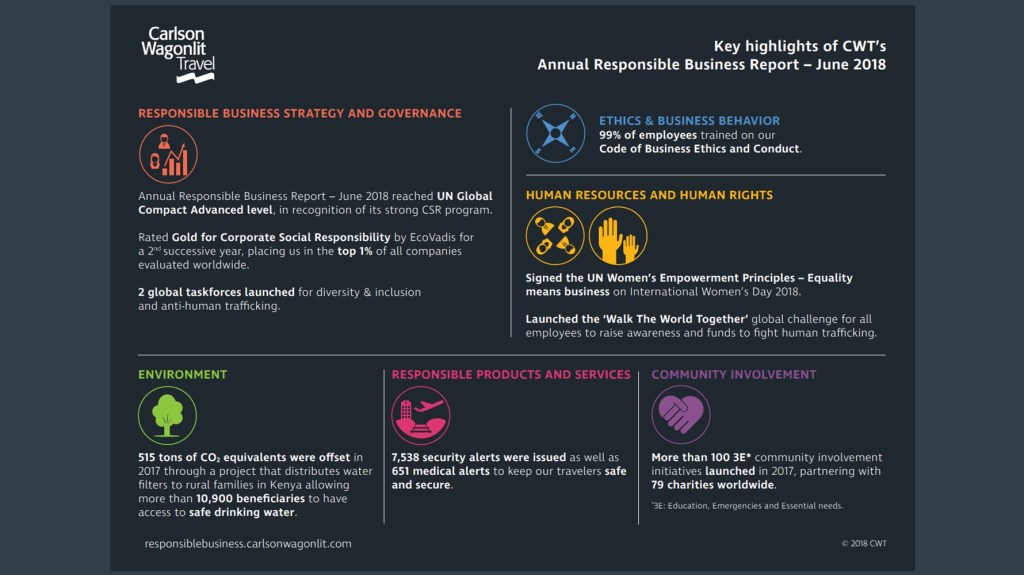
Carlson Wagonlit Travel shows significant progress in latest Annual Responsible Business Report
Carlson Wagonlit Travel (CWT), the global digital travel management company, today published its latest Annual Responsible Business Report, showing significant progress towards its 2020 objectives. This latest report has reached the UN Global Compact Advanced Level, recognizing the success of CWT’s Corporate Social Responsibility program.
“I am very proud the UN Global Compact has honored our commitment to ethical business behavior in this way,” said Kurt Ekert, CWT’s President and CEO. “Responsible Business is deeply embedded in our culture, and this recognition – on top of being rated Gold by EcoVadis for a second year running – shows that we are on the right path.”
Demonstrating CWT’s commitment to think, act, and live with integrity, the Annual Responsible Business Report covers CWT’s main achievements in its seven Corporate Social Responsibility (CSR) areas: Responsible Business Strategy and Governance, Ethics & Business Behavior, Human Resources, Human Rights, Environment, Community Involvement and Responsible Products and Services.
Some key accomplishments in 2017:
- CWT launched two taskforces with a focus on diversity and inclusion and on anti-human trafficking, sponsored by members of CWT’s Executive Leadership team.
- CWT carried out a detailed review of its Code of Business Ethics and Conduct to reflect the latest industry best practices and legislative trends. It also continued to run mandatory training on the Code of Business Ethics and Conduct for new recruits and current staff, and achieved a 99% completion rate.
- CWT offset 515 tons of CO2 equivalents to make two global events carbon neutral by supporting Carbon for Water™, a carbon offsetting project which helps rural communities in Kenya avoid the need to cut down trees to boil water, while ensuring that it is clean and safe. Thanks to its carbon offsetting efforts in 2017, 1,155 water filters were distributed to around 10,945 beneficiaries.
- CWT launched its social intranet to over 18,000 CWT users across nearly 50 countries. In just three months, the company achieved a 75% adoption rate. Christened ‘Buzz’ by the users, the tool helps employees stay informed, connect and collaborate and has quickly become CWT’s global digital community.
- CWT stepped up its fight against human trafficking through reinforced policies, increased awareness and education, and closer collaboration with stakeholders and public leadership. The company launched the ‘Walk The World Together’ global challenge for all employees to support ECPAT International. This campaign to collectively walk 24,901 miles (the circumference of the Earth) increased awareness and financial support to tackle human trafficking.
- CWT’s community involvement strategy focuses on targeting the 3E’s of: Education, Emergencies, and Essential needs. Through the hard work of its people, CWT organized more than 100 3E initiatives in 2017 alone, partnering with 79 charities around the world.
“These results show that we are on track to achieve our 2020 Responsible Business ambitions, and demonstrate why this new Annual Responsible Business Report meets the UN Global Compact Advanced Level,” said Françoise Grumberg, CWT’s Vice President, Global Responsible Business. “I am proud of the commitment and passion of our people.”
Carlson Wagonlit Travel
Companies and governments rely on us to keep their people connected. We provide their travelers with a consumer-grade travel experience, combining innovative technology with our vast experience. Every day, we look after enough travelers to fill more than 260 Boeing 787s and 100,000 hotel rooms – and handle 105 events. We operate in around 150 countries, and in 2017 posted a total transaction volume of more than US$ 23 billion.
-
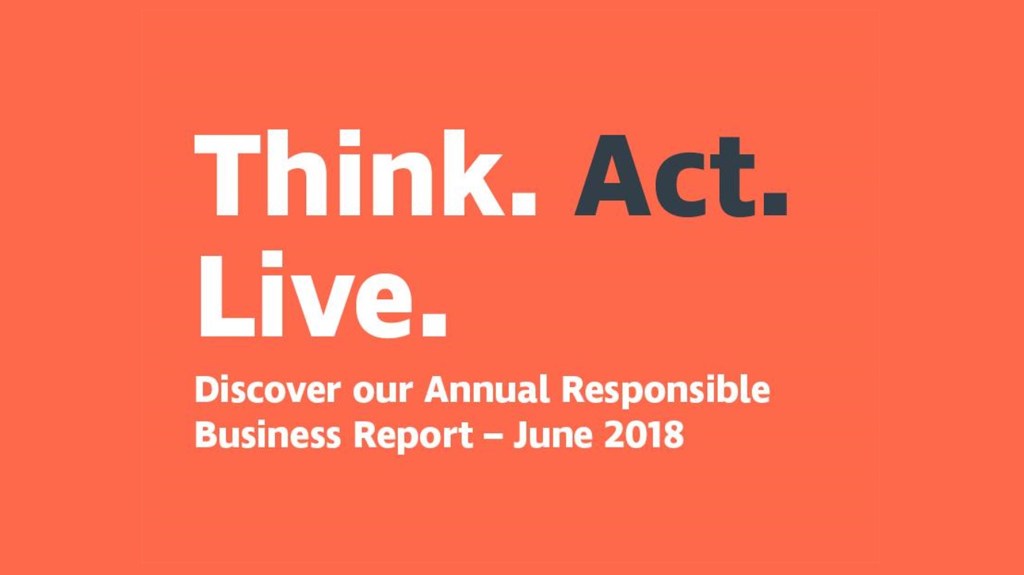
How we think, act and live responsibly
Today, we are releasing our Responsible Business Annual Report for the sixth consecutive year. This document is a testimony of how we progressed in 2017 towards the reach of our 2020 Responsible Business objectives.
It is a palpable way of tracking all the work that has been done worldwide by all of us at CWT, and all the great things we have achieved by working together. To prove it, not only did EcoVadis rate us Gold in 2017 but also this year we have repeated this success. And there is more. In 2018, our Annual Responsible Business Report also reached the UN Global Compact Advanced Level, the highest one available.
Our report shows our strong commitment to having a positive impact in the topics that matter the most to our stakeholders and that form the areas of focus of our Responsible Business program: Strategy & Governance, Ethics & Business Behavior, Human Resources, Human Right, Environment, Responsible Products and Services, and Community Involvement. Moreover, we do it so by thinking, acting and living according to our core values of Integrity, Leadership, Caring and Passion.
Curt Carlson, the founder of our parent company, believed that successful corporations have the privilege and obligation of citizenship in the greater world, so he fostered the values of community engagement and philanthropy, integrity and leadership.
Eighty years after he settled the standard, we still live by these very same values. They fuel our ethical culture and, thanks to them, we have been able to accomplish a lot and are on the right track to deliver in 2020.
I invite you to have a look at our report to check our signs of progress in 2017 and have a sneak peek of some of the initiatives we will be focusing on this year ahead and beyond, such as our work on diversity and inclusion, our fight against human trafficking, and our commitment to responsible purchasing and environment.
Happy reading and, please, do not hesitate to send us your thoughts.
-

Carlson Wagonlit Travel appoints Niklas Andréen as Chief Traveler Experience Officer effective September 2018
Carlson Wagonlit Travel, the global travel management company, has appointed Niklas Andréen as Executive Vice President and Chief Traveler Experience Officer, effective September 2018. Based in London, Niklas will report to Kurt Ekert, President & CEO of CWT, and serve as a member of the CWT Executive Leadership Team.
Niklas will oversee worldwide Traveler Services, which is being rebranded as Traveler Experience to align against CWT’s 3.0 digital strategy and a holistic approach to customer experience across all channels. He will take over these responsibilities from Matt Beatty, who has decided to leave the company later this year.
“Niklas brings a set of skills and experience to our team which will further accelerate the delivery of our strategic transformation,” said Kurt Ekert. “At the same time, we are sorry to see Matt leave after more than 25 great years with the company. Matt has made enormous contributions during his career with CWT, and will be missed after he departs. I join all of my colleagues in wishing him all the very best for the future.”
Niklas is currently Senior Vice President & Managing Director of Hospitality, Car, Digital Media, Corporate and Digital (Beyond Air) at Travelport, and held several other leadership roles there including leading the integration of Travelport’s digital assets into their business.Niklas also founded two businesses and held consulting positions with Accenture, Connecta and Monitor Company earlier in his career.
Niklas Andréen is a Swedish national and graduate of the Stockholm School of Economics.
Carlson Wagonlit Travel
Companies and governments rely on us to keep their people connected. We provide their travelers with a consumer-grade travel experience, combining innovative technology with our vast experience. Every day, we look after enough travelers to fill more than 260 Boeing 787s and 100,000 hotel rooms – and handle 105 events. We operate in around 150 countries, and in 2017 posted a total transaction volume of more than US$ 23 billion.
-

Build it, they’ll come – Why offering choice is critical
The percentage of business travelers who book hotels within their corporate travel programs has hovered around 50% – 60% for years.
Travel managers told the Global Business Travel Association (GBTA) that one reason is that their travelers want to stay at a different type of property than what’s available in their program. Another big reason? They can get better rates on their own.
Limited choice = Limited compliance
The heart of the matter is that business travelers don’t believe they have enough choice within their company’s program, whether due to location, property type or rates. For a long time, they were right.
While independent hotels are more prevalent in most areas of the world, chain hotels were the primary option in most global distribution systems (GDS), the main source of supply for travel management companies (TMC). Rates were limited to those negotiated or available publicly, unless a TMC managed to get exclusive rates.
So, travelers did what they had to. They booked directly through hotels or online travel agencies to find the rooms that met their needs.
Why we built RoomIt by CWT
We launched our hotel division start-up, RoomIt by CWT, to help travel managers address the issue of travelers booking outside of their company’s travel program. Travelers now have access to over 800,000 accommodation options, including chain hotels, independent properties, and optional apartments, in over 73,000 cities worldwide, giving them the choice they want.

The Key to Compliance: Offer options to your travelers Driving Compliance through choice
A CWT European manufacturing client struggled to increase the rate at which their staff booked within their program because travelers could not book accommodation in the smaller European cities they frequented.
In the year after the client implemented full RoomIt content across all of its booking channels, including their Traveldoo booking tool, its hotel attachment rate grew 5% and the average daily rate dropped an average of two dollars, resulting in almost $300,000 in annual savings. That equals 2,368 free hotel room nights a year for them. Time to order room service champagne.
If you build a hotel program with the right mix of rooms and rates, you’re sure to bring travelers back to your program.
-

Pick up the phone: A clear path for mobile booking
Consumers will always seek the path of least resistance to simplify their lives — and business travelers are no different.
As corporate travel apps historically failed to keep pace with their leisure counterparts, travelers have been torn between wanting an independent, intuitive and personal mobile booking experience, and needing to stick to their company policy.
Now, that’s where the new era of mobile travel apps comes in.
To underscore how mobile travel apps can benefit travel programs, we’ve outlined a few key reasons to embrace managing travel from our phones.
By 2021,half of digital travel sales will be from mobile
Mobile bookings are popular — and that’s not slowing down
Travelers are going to book flights and rooms via their phones and tablets whether their travel management company (TMC) has a good mobile app or not. In 2017, over 40 percent of all digital travel sales came from mobile devices, according to eMarketer. In 2021, it’s estimated that mobile will represent nearly half of all digital travel sales.
By steering employees to their TMC’s mobile app, proactive travel managers can ensure travelers are booking negotiated rates within the company policy.
Travelers: We’ll take it from here
Booking trips for thousands of employees is time-intensive and burdensome, and new data shows travelers will go it alone anyway. In fact, 78 percent of U.S. business travelers say they prefer using self-service technology to manage their travel, according to a joint study from the Global Business Travel Association and Sabre Corporation.
So, improve the travel experience and give them what they want through a smart TMC. A simple, customizable travel app like CWT To Go that incorporates a travel policy and other personalized data empowers employees to book on their own — lifting the burden from both traveler and travel manager.
Provide a one-stop shop
Travelers already use mobile devices to house boarding passes, trip itineraries and everything else they need for the road. We know they also want to book hotels, check in, find flight updates, receive alerts, and see potential trip disruptions all at their fingertips.
So, let’s let them.
As mobile business travel technology catches up and even surpasses that of its leisure counterparts, flight-booking and travel management innovations will allow for more seamless integration across the entire travel experience.
Make it personal
Employees demand a personalized mobile experience for smooth, uninterrupted traveling. According to Google and Ipsos Connect, 78 percent of business travelers are more loyal to a travel company that personalizes their experiences online and offline.
So, it’s important travelers have access to a savvy mobile app that provides timely, relevant and personal information and trip recommendations. Without one, busy travelers will simply book through another app — incurring avoidable costs, limiting visibility and compromising their companies’ duty of care.
Embrace the bots
We know that one-third of global travelers are interested in using digital assistants to research or book travel, thanks to a joint study from Google and Phocuswright, an independent travel research company.
Some travel and hospitality companies have begun deploying high-powered chatbot programs that gather cursory information from travelers and find the best policy-compliant trips available — often by using messaging platforms like Facebook Messenger.
Carlson Wagonlit Travel is already testing a beta version of one of these programs, and the results have been promising. Travelers can effortlessly schedule accommodations by simply texting the dates and locations they need — and our chatbot finds and books a preferred hotel.
Everyone’s got an app — choose a good one
Most national and multinational TMCs have a mobile app, but the strength and ease of use varies wildly across brands. At the same time, travelers are increasingly demanding access to tools that allow them to seamlessly book and manage their travel — and with a personal touch.
That’s why it’s imperative that travel managers and decision-makers consider a company’s mobile app when deciding on a travel management partner.
As CWT continues to break from the pack with mobile innovations, travelers and travel managers will reap the benefits — and the path of least resistance will remain clear.
